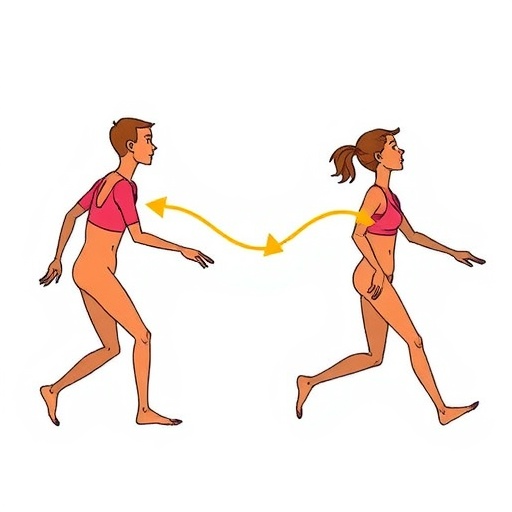A recent study led by a collaborative team of researchers, known as the Consortium for Motor Behavior in Neurodivergence (COMBINE), has shed light on the transdiagnostic patterns of motor differences observed in individuals with varying neurodevelopmental conditions. This highly anticipated research aims to bridge the existing knowledge gap regarding the interplay between motor behaviors and neurodiversity. The findings resonate within the broader scientific community, igniting conversations around neurodiversity and its implications on motor function.
Neurodivergence encompasses a range of conditions, including autism spectrum disorder (ASD), attention-deficit hyperactivity disorder (ADHD), and developmental coordination disorder (DCD), among others. Each of these conditions presents unique motor characteristics that often overlap, raising questions about the underlying mechanisms that drive these motor differences. The investigation into this intriguing intersection of cognitive and motor functioning is pivotal for forming effective therapeutic interventions and supporting individuals’ needs more comprehensively.
One of the key insights from this research is the identification of certain motor patterns that transcend individual diagnoses. For example, individuals with autism may exhibit distinct motor movements that are not solely defined by their diagnosis. Instead, these movements may be part of a broader spectrum of motor behavior shared among different neurodivergent populations. Such findings challenge the traditional, diagnosis-centric views of motor behavior, advocating for a more inclusive understanding that considers shared traits across disorders.
The methodology employed in this study involved a rigorous analysis of motor tasks across a diverse cohort, allowing the researchers to pinpoint specific patterns that could suggest commonalities in motor function. Utilizing advanced technology, including motion capture systems and biomechanical assessments, the research team meticulously recorded and analyzed motor responses from participants. This technological approach provided a comprehensive view of motor differences that traditional observational studies often miss.
Furthermore, researchers highlighted the significance of early interventions in addressing motor differences associated with neurodivergent conditions. By understanding shared motor patterns, practitioners can devise targeted interventions aimed at enhancing motor skills and overall daily functioning. For instance, integrating motor skill development with therapeutic strategies tailored to the individual’s unique profile could yield improved outcomes and greater independence for those affected.
The implications of these findings extend beyond merely informing clinical practices; they also have the potential to reshape public perception of neurodiversity. As stigma around neurodevelopmental conditions continues to linger, research that elucidates commonalities among individuals may promote greater acceptance and understanding. The narrative around neurodivergence is evolving, and studies like these are essential in fostering a society that values diversity in all its forms.
Moreover, the research underlines the importance of interdisciplinary collaboration in advancing our understanding of motor behaviors. By bringing together experts from various fields such as neuroscience, psychology, and occupational therapy, the project exemplifies how diverse perspectives can create a more holistic view of neurodiversity. This collaboration can lead to innovative assessment and treatment approaches that cater to the nuanced needs of individuals across the spectrum.
In addition to focusing on motor differences, the study also addresses the psychological aspects linked to these patterns. Researchers observed that emotional regulation and social communication are deeply intertwined with motor behavior, indicating that addressing one facet could have ripple effects across others. This holistic perspective suggests that treatments should not only target motor function but also consider mental and emotional health as interconnected elements of the individual’s experience.
As the findings from the COMBINE consortium gain traction, the conversation about research funding and resources dedicated to studying motor behaviors in neurodivergent populations becomes crucial. Advocates argue that increased investment in this area could lead to groundbreaking discoveries, ultimately empowering individuals with the tools needed for thriving in various aspects of life. The importance of continued research cannot be overstated; it lays the groundwork for fostering an inclusive environment that recognizes and values neurodiversity.
Looking ahead, the next steps involve larger-scale studies to validate the preliminary findings and explore further dimensions of motor function in neurodivergent individuals. By expanding the participant base and incorporating longitudinal studies, researchers hope to unveil deeper insights into how motor behaviors evolve over time and how they react to various interventions. Such work is imperative for developing evidence-based practices that can effectively meet the diverse needs of this population.
Finally, the discourse surrounding the motor behavior of neurodivergent individuals reflects a broader movement toward an inclusive society that prioritizes understanding and adaptation. As communities begin to embrace neurodiversity, the insights garnered from studies like that of the COMBINE consortium will be instrumental in shaping policies, educational practices, and community support systems that are responsive to the needs of all individuals.
The findings of this groundbreaking research not only contribute to the scientific understanding of motor differences but also emphasize the need for continued advocacy and education surrounding neurodiversity. By recognizing and valuing differences in motor behavior, the global community can take significant strides toward inclusivity and support for individuals with neurodivergent conditions, ensuring they have the opportunity to thrive.
In conclusion, the exploration of transdiagnostic patterns of motor differences among neurodivergent individuals is a promising field of study that holds the key to fostering understanding, acceptance, and effective interventions. Through collaboration, innovative research methodologies, and a commitment to inclusivity, scientists are paving the way for a future where neurodiversity is not only acknowledged but celebrated, promoting a richer and more diverse society.
Subject of Research: Transdiagnostic patterns of motor differences in neurodivergent individuals.
Article Title: Examining Transdiagnostic Patterns of Motor Differences: Preliminary Findings From the Consortium for Motor Behavior in Neurodivergence (COMBINE).
Article References:
Fears, N.E., Tamplain, P.M. & Miller, H.L. Examining Transdiagnostic Patterns of Motor Differences: Preliminary Findings From the Consortium for Motor Behavior in Neurodivergence (COMBINE). J Autism Dev Disord (2025). https://doi.org/10.1007/s10803-025-07042-0
Image Credits: AI Generated
DOI:
Keywords: Neurodivergence, Motor Differences, Autism, Developmental Disorders, Interventions, Inclusivity, Research Collaboration.




